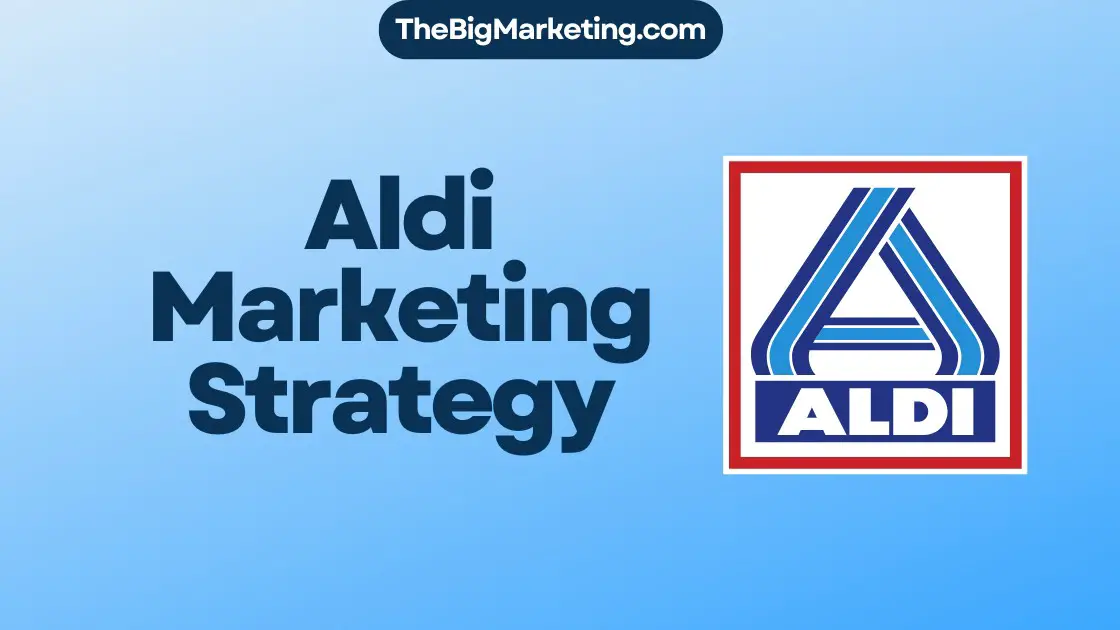E-commerce marketing has become essential for businesses to promote their products and services online. In today’s digital age, having a strong online presence and implementing effective marketing strategies is crucial for driving online sales and remaining competitive in the ever-growing e-commerce industry.
As technology continues to evolve and consumer behavior shifts towards online shopping, businesses need to develop comprehensive online shopping marketing strategies to effectively reach their target audience and drive conversions. In this article, we will explore various e-commerce marketing tactics, digital marketing strategies, and the role they play in shaping the success of businesses in 2024.
Key Takeaways:
- Online shopping marketing strategy is essential for businesses to promote their products and services online.
- E-commerce marketing tactics involve various digital marketing strategies such as social media marketing, influencer collaborations, and email marketing strategies.
- Implementing effective online advertising campaigns and content marketing approaches can help businesses attract and retain customers.
- Search engine optimization (SEO) and conversion rate optimization (CRO) are crucial techniques for driving organic traffic and increasing conversion rates.
- Having a strong online presence and utilizing the right digital marketing tactics can significantly impact a business’s success in the e-commerce landscape.
What Is E-Commerce Marketing?
E-commerce marketing plays a crucial role in driving online sales and promoting digital platforms and online stores. As more consumers turn to online shopping, businesses need to leverage e-commerce marketing strategies to attract potential customers and convert them into paying customers. By utilizing digital platforms such as websites and social media, businesses can effectively reach their target audience and drive online sales.
E-commerce marketing involves various tactics and techniques to optimize online presence and generate revenue. From creating engaging content to implementing targeted advertising campaigns, businesses can enhance their visibility, increase brand awareness, and drive traffic to their online stores. By utilizing search engine optimization (SEO) techniques, businesses can improve their search engine rankings and organic traffic, ensuring they are easily discoverable by online shoppers.
Furthermore, e-commerce marketing allows businesses to build relationships with customers through personalized email marketing campaigns. By sending targeted emails based on customer preferences and behavior, businesses can nurture leads and encourage repeat purchases. It also provides an opportunity for businesses to showcase their products and services through captivating visuals and compelling descriptions, ultimately driving conversions.
Benefits of E-Commerce Marketing
Implementing e-commerce marketing strategies offers several benefits for businesses:
- Increased online visibility: With effective e-commerce marketing, businesses can enhance their online presence and reach a wider audience.
- Higher conversion rates: By utilizing persuasive marketing techniques, businesses can successfully convert website visitors into paying customers.
- Improved customer engagement: E-commerce marketing allows businesses to engage with their audience through social media platforms, building a loyal customer base.
- Targeted advertising: Businesses can target specific demographics and customer segments through digital advertising campaigns, ensuring maximum return on investment.
- Enhanced customer experience: E-commerce marketing allows businesses to provide personalized experiences and tailored recommendations, improving overall customer satisfaction.
In conclusion, e-commerce marketing is a vital component of any successful online business. By implementing effective strategies and leveraging digital platforms, businesses can drive online sales, increase brand visibility, and ultimately achieve their e-commerce goals.
E-Commerce Marketing vs. E-Commerce Advertising
E-commerce marketing and e-commerce advertising are two interconnected strategies in the world of online commerce. While e-commerce marketing focuses on promoting products or services within the digital environment and building brand visibility and customer trust, e-commerce advertising uses paid advertisements to drive traffic and increase sales. Both strategies work together to attract potential customers and boost sales.
When it comes to e-commerce marketing, businesses employ various tactics to enhance their online presence and engage with their target audience. These tactics can include content marketing, social media marketing, search engine optimization (SEO), and email marketing. The goal is to create a comprehensive marketing strategy that promotes the brand and its offerings, ultimately driving traffic to the e-commerce website and boosting sales.
E-commerce advertising, on the other hand, involves paid promotional activities to attract online traffic and increase sales. This can include running paid ads on search engines or social media platforms, partnering with influencers or affiliates to promote products or services, and utilizing display advertising to reach a wider audience. By investing in strategic advertising campaigns, businesses can effectively drive online traffic and generate more sales.
It is important to note that e-commerce marketing and e-commerce advertising work hand in hand. While marketing efforts focus on creating a strong brand presence and building trust with the audience, advertising plays a crucial role in driving traffic and converting potential customers into paying ones. By combining both strategies, businesses can maximize their online presence, attract more customers, and ultimately boost sales.
Here is a comparison table between e-commerce marketing and e-commerce advertising:
| E-Commerce Marketing | E-Commerce Advertising |
|---|---|
| Focuses on promoting products or services within the digital environment | Utilizes paid advertisements to drive traffic and increase sales |
| Builds brand visibility and customer trust | Targets specific audience segments and drives traffic |
| Includes tactics such as content marketing, social media marketing, SEO, and email marketing | Involves strategies like paid search ads, influencer collaborations, and display advertising |
| Aims to engage with the target audience and drive organic traffic | Focuses on paid promotional activities to attract online traffic |
| Works towards long-term brand growth and customer retention | Focuses on immediate results and sales conversion |
By understanding the differences between e-commerce marketing and e-commerce advertising, businesses can develop a comprehensive strategy that combines both approaches to effectively boost online traffic and sales.
Boosting Online Sales with E-Commerce Marketing and Advertising
When it comes to maximizing online sales, an integrated approach that combines e-commerce marketing and advertising is key. By leveraging marketing tactics to build brand visibility and trust, and utilizing targeted advertising campaigns to drive traffic, businesses can effectively boost their online presence and increase sales.
One of the advantages of e-commerce marketing is its ability to engage with the target audience and create a meaningful connection. By providing valuable content, engaging on social media platforms, and optimizing the website for search engines, businesses can attract potential customers and build brand loyalty. This organic traffic generated through marketing efforts creates a solid foundation for success.
However, organic traffic alone may not be sufficient to meet sales targets. This is where e-commerce advertising comes into play. By investing in paid advertising campaigns, businesses can reach a wider audience, target specific customer segments, and drive immediate traffic to the website. This targeted approach ensures that the right message reaches the right people, increasing the likelihood of conversions and boosting sales.
By combining e-commerce marketing and advertising, businesses can create a seamless customer journey that starts with brand awareness, moves through engagement and trust-building, and ultimately leads to purchase. It is important to strike a balance between marketing efforts and advertising budgets to ensure optimal results and a positive return on investment.
In conclusion, e-commerce marketing and advertising are two complementary strategies that work together to boost online sales. By leveraging marketing tactics to build brand visibility and trust, and utilizing advertising campaigns to drive targeted traffic, businesses can effectively attract potential customers and convert them into paying ones. By taking a holistic approach to e-commerce promotion, businesses can maximize their online presence, boost sales, and achieve long-term success in the digital marketplace.
Why E-Commerce Marketing Is Important
E-commerce marketing plays a crucial role in the success of online businesses. By implementing effective marketing strategies, businesses can achieve various benefits and gain a competitive edge in the digital marketplace.
Build Brand Awareness
One of the primary reasons why e-commerce marketing is important is its ability to build brand awareness. Through targeted digital marketing efforts, businesses can increase their visibility and reach a wider audience. By promoting their products and services online, businesses can establish themselves as reputable brands and create a strong brand identity.
Cost-Effective Marketing
E-commerce marketing offers a cost-effective alternative to traditional marketing methods. Traditional marketing usually involves higher costs, such as print advertising or television commercials. On the other hand, e-commerce marketing channels like social media, email newsletters, and content marketing tend to be more affordable and yield higher returns on investment.
Round-the-Clock Availability
Unlike brick-and-mortar stores with limited operating hours, e-commerce businesses can provide round-the-clock availability to customers. Online stores are accessible 24/7, allowing customers to shop at their convenience. This flexibility not only caters to customers’ needs but also enables businesses to generate sales even outside traditional business hours.
Data-Driven Marketing
E-commerce marketing relies on data-driven strategies to improve performance and enhance customer targeting. Through various analytics tools and platforms, businesses can gather valuable data on customer behavior, preferences, and purchase patterns. This data can then be used to develop personalized marketing campaigns, deliver targeted advertisements, and optimize overall marketing strategies.
Data-driven marketing allows businesses to make informed decisions based on real-time insights, leading to more effective marketing campaigns and improved customer engagement.
In conclusion, e-commerce marketing holds significant importance for businesses aiming to thrive in the digital marketplace. By building brand awareness, leveraging cost-effective marketing methods, providing round-the-clock availability, and utilizing data-driven strategies, businesses can enhance their online presence, attract new customers, and drive sales effectively.
Types of E-Commerce Marketing
When it comes to boosting online sales, businesses have a variety of e-commerce marketing strategies at their disposal. Each strategy plays a unique role in attracting customers and driving conversions. Let’s explore some of the most effective types of e-commerce marketing:
E-Commerce Platforms
E-commerce platforms provide businesses with the necessary tools and features to set up and manage an online store. These platforms handle everything from inventory management to secure payment processing, making it easier for businesses to sell their products or services online. By utilizing e-commerce platforms, businesses can create a user-friendly shopping experience for their customers and increase their chances of making a sale.
Content Marketing
With content marketing, businesses provide valuable and relevant content to attract and engage potential customers. This can be done through blog posts, articles, videos, or any form of content that educates and entertains the target audience. By establishing themselves as industry experts and offering helpful insights, businesses can build trust and credibility with potential customers, ultimately driving them to make a purchase.
Email Marketing
Email marketing remains a powerful tool for directly communicating with customers. By collecting email addresses from website visitors, businesses can send targeted messages, promotions, and personalized recommendations to their subscribers. Email marketing allows businesses to nurture relationships with customers, keep them informed about new products or offers, and ultimately drive repeat sales.
Social Media Marketing
In today’s digital landscape, social media marketing is an essential component of any e-commerce marketing strategy. By leveraging platforms such as Facebook, Instagram, and Twitter, businesses can reach a wider audience and engage with potential customers on a more personal level. Social media marketing involves creating content, running targeted ads, and actively interacting with followers to build brand awareness, drive traffic to the online store, and generate sales.
Search Engine Optimization (SEO)
Search engine optimization (SEO) is the process of optimizing a website to improve its visibility on search engine results pages. By implementing SEO best practices, businesses can increase their organic traffic and attract potential customers who are actively searching for products or services. This involves keyword research, on-page optimization, link building, and creating high-quality content that meets the needs of both search engines and users.
| E-commerce Marketing Strategy | Benefits |
|---|---|
| E-commerce Platforms |
|
| Content Marketing |
|
| Email Marketing |
|
| Social Media Marketing |
|
| Search Engine Optimization (SEO) |
|
By employing a combination of these e-commerce marketing strategies, businesses can effectively promote their products or services, reach their target audience, and drive online sales. However, it’s important to analyze the specific needs and goals of the business to determine which strategies will be the most effective in achieving success.
What Is an Ecommerce Website?
An ecommerce website is a platform that enables the buying and selling of products and services online. It serves as a virtual storefront where businesses can showcase their offerings to a wide range of potential customers. Whether it’s a small local business targeting a specific audience or a large corporation with a global reach, an ecommerce website provides a digital space for seamless transactions and convenient shopping experiences.
One of the key features of an ecommerce website is the ability to facilitate online buying and selling. Customers can browse through a vast catalog of products, compare prices, and make purchases from the comfort of their homes. For businesses, an ecommerce website opens up new opportunities for reaching customers beyond traditional brick-and-mortar limitations.
Another crucial aspect of ecommerce websites is the integration of secure payment gateways. With the increasing concerns over online security, it is essential to provide customers with a safe and secure platform for financial transactions. Secure payment gateways ensure that sensitive customer information, such as credit card details, is encrypted and protected, instilling trust and confidence in online buyers.
Overall, ecommerce websites revolutionize the way businesses operate by leveraging the power of the internet and technology. They offer convenience, accessibility, and a global reach, making online buying and selling a seamless experience for both businesses and customers.
An Illustration of an Ecommerce Website:
In this example, we can see an ecommerce website that showcases a variety of products, ranging from electronics and fashion to home decor and beauty products. The website is well-designed, with clear navigation menus, appealing product images, and detailed descriptions. The secure payment gateway ensures secure transactions, providing customers with a safe and convenient shopping experience.
Types of Ecommerce Businesses Explained
When it comes to e-commerce businesses, there are several different models that exist to cater to various needs and interactions. Understanding these models is crucial for businesses looking to enter or expand their presence in the digital marketplace. Let’s explore the different types of e-commerce businesses:
1. Business-to-Consumer (B2C)
B2C e-commerce involves businesses selling products or services directly to individual consumers. This is the most common type of e-commerce business model, where companies aim to attract and satisfy the needs of their target customers through online platforms and transactions.
2. Business-to-Business (B2B)
In the B2B e-commerce model, businesses sell products or services to other businesses. These transactions often involve larger order volumes, long-term contracts, and specialized products or services tailored to the specific needs of other companies.
3. Business-to-Government (B2G)
B2G e-commerce refers to businesses selling products or services to government entities. This model primarily revolves around online procurement systems and government contracts, where businesses have the opportunity to provide goods and services directly to governmental organizations.
4. Consumer-to-Consumer (C2C)
C2C e-commerce enables consumers to sell goods or services directly to other consumers through online platforms. This model often involves peer-to-peer marketplaces where individuals can list, buy, and sell items without the need for intermediaries.
5. Consumer-to-Business (C2B)
C2B e-commerce occurs when individuals offer their products or services to businesses. This model is commonly seen in freelance platforms or content creation sites, where individuals provide their skills, expertise, or content to businesses in exchange for payment.
6. Consumer-to-Government (C2G)
C2G e-commerce involves consumers interacting with government entities through online platforms. This can include activities such as paying taxes, applying for permits or licenses, or accessing government services electronically.
Understanding these different types of e-commerce businesses is important for businesses and individuals looking to engage in online transactions, as it allows them to tailor their strategies and approaches to meet the specific needs and dynamics of each model.
The Benefits of Ecommerce Businesses
E-commerce businesses offer a wide range of benefits for both buyers and sellers. Whether you’re a customer looking for convenience and variety or a business owner seeking a broader reach and lower costs, e-commerce has revolutionized the way we shop and conduct business. Let’s explore some of the key advantages:
- Wider Reach: With e-commerce, businesses can expand their customer base beyond geographical limitations. Online stores have the potential to reach a global audience, allowing companies to tap into new markets and increase their sales potential.
- Convenience: One of the main attractions of e-commerce is the convenience it offers to customers. With just a few clicks, shoppers can browse through a wide range of products, compare prices, and make purchases from the comfort of their homes or while on the go. This flexibility eliminates the need to visit physical stores, saving time and effort.
- Low Costs: Operating an online store comes with significantly lower costs compared to brick-and-mortar establishments. E-commerce businesses can eliminate expenses related to rent, utilities, and in-store staff. These cost savings can be passed on to customers in the form of competitive prices, discounts, or free shipping, making online shopping an attractive option.
- Customer Data: E-commerce businesses have the advantage of gathering valuable customer data. With each interaction and transaction, companies can collect information such as purchasing habits, preferences, and demographic details. This data can be used to personalize marketing campaigns, improve product offerings, and enhance the overall customer experience.
- Faster Service: E-commerce allows for quick and efficient order processing, reducing the time customers have to wait for their purchases. Automated systems and streamlined logistics enable businesses to fulfill orders promptly, ensuring customer satisfaction and loyalty.
- Payment Flexibility: Online businesses offer flexible payment options to accommodate different customer preferences. From credit and debit cards to digital wallets and buy now, pay later services, e-commerce provides convenience and choice when it comes to making a purchase.
Enhancing the Ecommerce Experience:
To further enhance the e-commerce experience, businesses can leverage technology and data-driven insights to personalize offerings, improve product recommendations, and provide exceptional customer support. By harnessing the power of automation, artificial intelligence, and machine learning, e-commerce businesses can constantly refine their strategies and stay ahead of the competition.
| Benefits | Wider reach | Convenience | Low costs | Customer data | Faster service | Payment flexibility |
|---|---|---|---|---|---|---|
| Definition | Expanding customer base beyond geographical limitations | Convenience of online shopping from anywhere | Reduced expenses of physical stores | Collection of valuable customer information | Efficient order processing and timely delivery | Flexible payment options for customers |
Conclusion
In today’s digital marketplace, e-commerce success hinges on implementing a strong online shopping marketing strategy. By leveraging various digital marketing tactics such as social media marketing, influencer collaborations, email marketing strategies, and content marketing approaches, businesses can enhance their online visibility and drive sales effectively. It is crucial to stay abreast of the latest trends, technologies, and consumer preferences to thrive in the ever-evolving world of e-commerce.
With an effective online shopping marketing strategy in place, businesses can build brand awareness, reach a wider audience, and drive online sales. By utilizing social media platforms, collaborating with influencers, and engaging customers through targeted email campaigns, businesses can create a compelling online presence. Additionally, leveraging content marketing approaches and staying on top of search engine optimization techniques can further enhance visibility and attract organic traffic.
Success in the digital marketplace requires a comprehensive approach that incorporates data-driven insights and adaptability. By staying informed about changing consumer behaviors and preferences, businesses can tailor their marketing strategies to meet evolving demands. By regularly analyzing the effectiveness of marketing campaigns and optimizing conversion rates, businesses can maximize their potential for e-commerce success.







